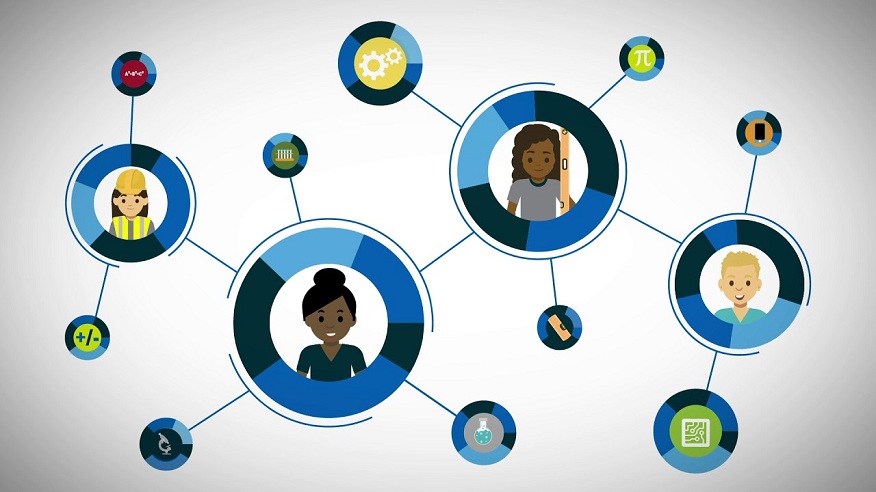Employee resource groups (ERGs) have become an increasingly popular strategy for promoting diversity, equity and inclusion within the workplace. ERGs, also known as affinity groups or business network groups, are voluntary, employee-led groups that bring together employees who share a common identity, background, or interest. From our experience working with clients across Florida, we have found that ERGs can play a pivotal role in fostering a sense of community and belonging among employees. In this article, we provide an overview of ERGs, their history, their goals and benefits, and best practices for implementing an effective ERG program.

A Brief History of ERGs
ERGs first emerged in the 1960s when black workers at Xerox organized to discuss race-based tension in the workplace and advocate for change within the company. This group, called the National Black Employees Caucus, is considered the first official ERG. Throughout the 1970s and 1980s, similar groups began forming at other companies to provide support for women, LGBTQ employees, employees with disabilities, and other underrepresented groups.
Over 90% of Fortune 500 companies now have ERGs, which have expanded beyond their original purpose of promoting inclusion. Today, effective ERGs also focus on career development, community building, networking, and achieving diversity and equity goals. When done right, ERGs create a sense of belonging and boost employee retention, engagement, and advancement opportunities.
Different Types of ERGs
There are many different types of ERGs found across organizations today. Some of the most common include:
- Culture or ethnicity-based (ex. Black, Latinx, Asian)
- LGBTQ
- Women/female-identified
- Employees with disabilities
- Working parents, caregivers
- Faith-based
Companies may also like groups focused on interests like sustainability, volunteering, wellness, or veterans. Organizations can have multiple ERGs to meet the needs of different demographic groups. Employees often participate in more than one ERG if they identify with multiple groups.
The Role and Goals of ERGs
ERGs serve several interrelated goals within an organization:
- Support: ERGs provide support, mentoring, and professional development opportunities for members. They create a safe space for affinity group members to connect, find community, and discuss shared experiences.
- Recruiting and Retention: By fostering an inclusive culture, ERGs can aid in recruiting and retaining diverse talent. ERGs demonstrate a commitment to supporting underrepresented groups.
- Business Insights: ERGs provide forums for employees to share insights, perspectives, and feedback related to their demographic group. This supports diversity of thought and opportunities for innovation.
- Advocacy: ERGs may advocate for policy changes and initiatives related to their group’s focus area. They serve as liaisons between management and affinity group members.
- Community Outreach: Some ERGs participate in outreach, philanthropic activities, and events relevant to their group’s interests.
- Leadership Development: Leading or participating in ERGs provides growth opportunities for employees. ERG initiatives can uncover future organizational leaders.
Benefits of ERGs
Effective employee resource groups provide many benefits for employees and for their organizations as a whole.
For Employees
ERGs help employees in the following ways:
- Foster a sense of community and belonging
- Provide support from peers with shared experiences
- Expand professional networks and relationships
- Gain visibility to senior leaders for career advancement
- Have a voice to advocate for change within the organization
By bringing together groups of employees who may otherwise feel isolated or excluded, ERGs can help create a more diverse, equitable, and inclusive workplace.
For Organizations
ERGs also benefit the business and the organization. ERGs can help:
- Attract and retain diverse talent
- Provide insights on diverse markets or customers
- Promote cultural awareness and sensitivity
- Identify high potential employees for development opportunities
- Improve brand reputation as a great place to work
Overall, ERGs lead to greater employee engagement, innovation, and business performance when part of an effective overall DEI strategy.
Best Practices for Effective ERGs
While ERGs offer many benefits, they must be properly supported and structured to succeed. Here are some best practices for companies looking to start or improve their ERG programs:
- Secure executive sponsorship and budgeting for activities
- Establish clear goals and alignment with DEI strategy
- Create formalized structure with leadership roles
- Develop guidelines for membership and operations
- Provide training for ERG leaders
- Promote ERG participation during onboarding
- Recognize ERG contributions in performance management
- Regularly assess participation, programming, and impact
When ERG members and leaders get organizational support, ERGs are more likely to foster employee community building, amplify marginalized voices, and create meaningful progress on DEI.
Examples of Companies with Successful ERGs
Many leading organizations leverage ERGs to drive inclusion, equity, and business growth. Here are a few examples:
- McDonald’s has 10 ERGs and credits them for significant increases in diverse talent acquisition and retention.
- Salesforce has 9 ERGs open to all employees globally. Their ERGs contributed to Salesforce being named a Best Place to Work for LGBTQ Equality.
- Boeing supports over 25 ERGs for various ethnic, LGBTQ, veterans, people with disabilities and women employees. Their ERGs are considered a talent pipeline for leadership roles.
- Accenture has over 200 ERGs called Employee Networks globally. These groups shape Accenture’s inclusion and diversity strategies.
The Role of Mentorship in ERGs
Mentorship programs are a great way to accelerate the impact of ERGs. Pairing ERG members with mentors through formal programs can provide coaching on career growth, visibility to opportunities, and connections with leaders across the organization. Mentorship brings ERG members together with allies dedicated to their development and success.
Partnering with The Norfus Firm for ERG Success
As you explore launching or optimizing ERGs in your organization, the DEI, and outsourced HR consultants at The Norfus Firm are here to help. Our team can conduct needs assessments, provide ERG training, help track program success, and offer guidance tailored to your organization’s specific diversity, equity and inclusion goals.



